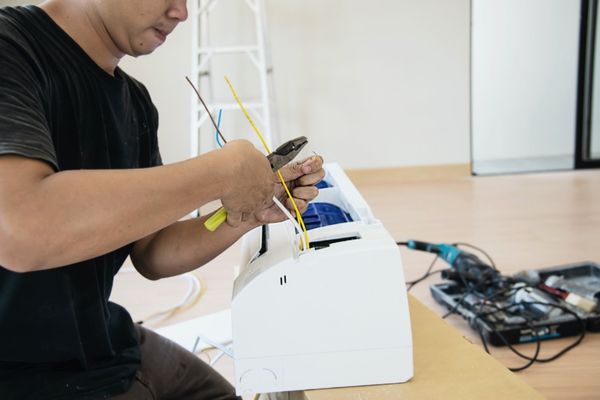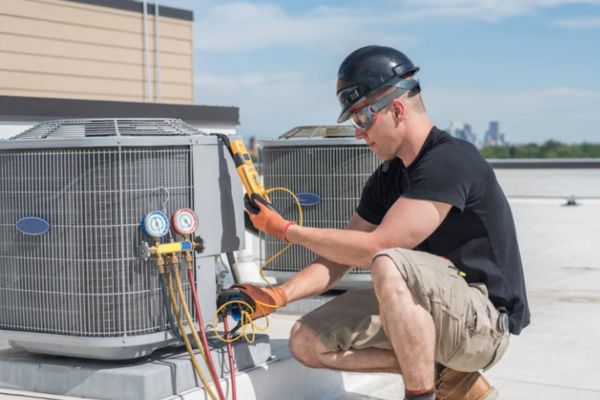Multi-split air conditioning systems are designed to cool multiple rooms using a single outdoor unit. They provide an ideal solution for homeowners seeking comfort in multiple areas without the clutter of individual outdoor units for each indoor system.
With this system, you can connect several indoor units to one outdoor unit, each controlling the temperature of different rooms, making it a space-efficient and flexible option.

How Multi-Split Systems Operate
Understanding how multi-split systems work can help you decide if they suit your home. These systems allow the outdoor compressor unit to regulate the cooling for several indoor units.
Each indoor unit operates independently, allowing different rooms to maintain unique temperatures. This system offers unmatched flexibility, especially in homes with varying cooling needs in different areas.
Key Advantages of Multi-Split Systems
Multi-split systems offer several advantages that appeal to homeowners looking to save on energy bills and enjoy personalized comfort. Here’s why they are becoming a go-to choice for modern homes.
The key benefits include energy efficiency, as the system only cools rooms in use, which reduces electricity consumption. Additionally, its space-saving design eliminates the need for multiple outdoor units while offering individual temperature control in every room for customized comfort.
Factors to Consider When Choosing a Multi-Split System
Before you invest in a multi-split air conditioning system, consider the following to ensure it meets your home’s specific needs.
SEER Rating (Seasonal Energy Efficiency Ratio)
The SEER rating measures how efficiently an air conditioner operates during a cooling season. Units with a higher SEER rating are more energy-efficient, helping reduce utility bills. Opt for a unit with the highest SEER rating within your budget for maximum efficiency.
EER Rating (Energy Efficiency Ratio)
The EER rating evaluates a unit’s energy consumption per square foot of cooling capacity. A higher EER means better energy efficiency, particularly during peak cooling times. Aim for a high EER rating unit for optimal performance and cost savings.
BTU (British Thermal Unit)
BTUs determine the cooling capacity of an air conditioner. The larger the space, the higher the BTU count needed to maintain a comfortable temperature. You can use an online calculator to estimate your BTU needs or consult with an HVAC professional to ensure the right fit for your space.
ENERGY STAR Certification
Products with the ENERGY STAR label have been tested and meet strict guidelines established by the Environmental Protection Agency (EPA) and the Department of Energy. These units are cost-effective, energy-efficient, and eco-friendly, ensuring you make a green and economical choice.
Cost and Savings
While units with higher ratings in these categories may come with a higher price tag—ranging from $1,400 to $3,400 for split systems and $1,700 to $3,600 for multi-split systems—these initial costs are often offset by long-term savings. High-efficiency units can reduce your monthly cooling bills by up to 30%, making them a wise investment.
The number of rooms you need to cool will determine how many indoor units you need to install. You’ll also want to assess the layout of your home to ensure the system is effective in all the right areas. Consider your budget and compare brands based on energy efficiency ratings to maximize long-term savings.
Professional Installation Guidelines
Proper installation of a multi-split system is essential to avoid potential issues and ensure efficient operation. In this section, we cover the basics of what to expect during installation.
Having your system installed by a certified professional is crucial for ensuring its longevity and efficiency. Correct placement of both the indoor and outdoor units will directly affect the system’s performance, so consulting an experienced technician is recommended.
Maintenance Tips for Multi-Split Systems
Maintaining your multi-split air conditioning system is key to ensuring it runs smoothly for years. Regular upkeep will improve performance and extend the lifespan of your unit.
Routine maintenance includes cleaning or replacing filters regularly to maintain airflow and efficiency. It’s also recommended that professional servicing is scheduled annually to check for issues and perform a more thorough inspection of the system’s components.

Cost Breakdown and Factors Affecting Multi-Split Systems
The cost of installing a multi-split system can vary based on several factors. Understanding what contributes to the overall expense will help you plan your budget accordingly.
The total cost typically includes the price of the system itself, labor for installation, and any additional materials required. Factors such as the size of your home, the number of indoor units, and the complexity of the installation can all influence the final price. While initial costs may be higher than traditional units, the long-term savings in energy efficiency can make it a worthwhile investment.


